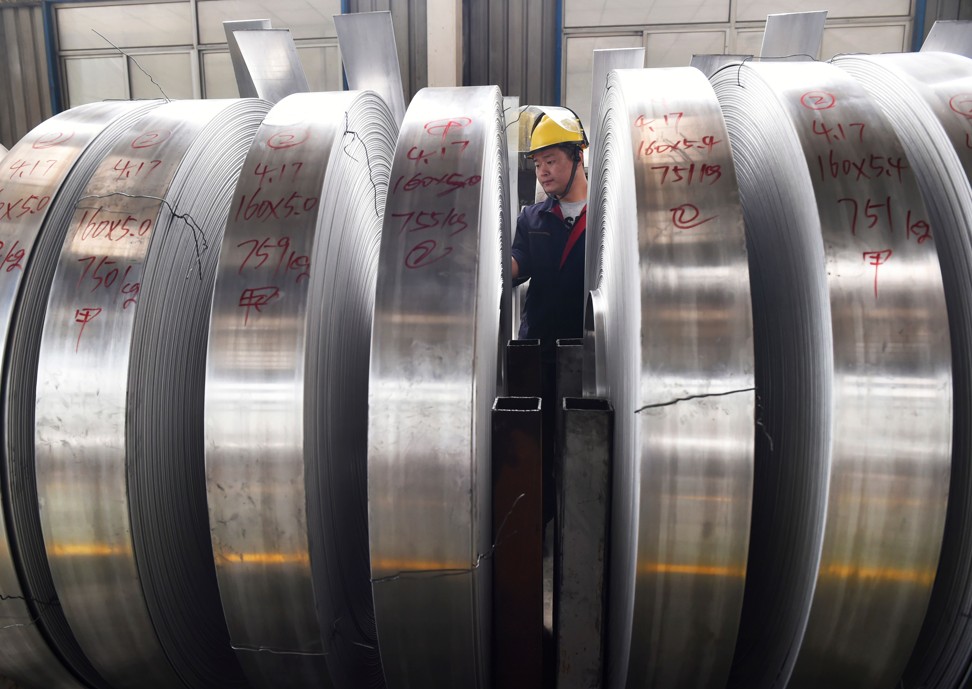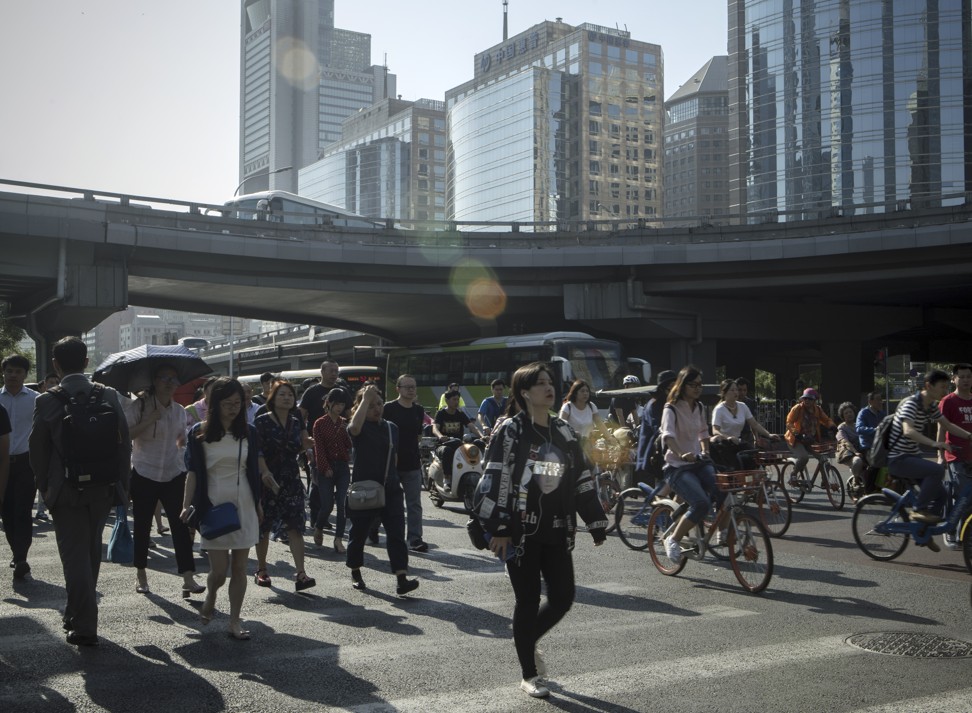
China’s economy cools in May as Beijing’s efforts to reduce debt levels start to bite
Fixed-asset investment in first five months grows at slowest rate since records began in 1998; monthly retail sales growth slowest in 15 years
China’s US$12 trillion economy suffered a downturn in May as retail sales expanded by their slowest rate in 15 years and fixed-asset investment growth in the first five months was the slowest on record, according to official figures released on Thursday.
Retail sales, a key measure of consumer spending, rose by just 8.5 per cent year on year in May, its slowest rate since June 2003. Car sales in the month fell by 1 per cent from a year earlier, while industrial production, another pillar of growth, also lost steam, the National Bureau of Statistics said.
Fixed-asset investment – the single biggest driver of the world’s second-largest economy – in the January-May period increased by 6.1 per cent year on year, the slowest rise of any period since records began in 1998.
The weaker economic performance, along with weak credit and the uncertainty caused by trade tensions with the United States, could point to a lower headline growth rate in the second half of the year and beyond, analysts said.
Louis Kuijs, head of Asia Economics for Oxford Economics, said China’s GDP growth may slow to 6.4 per cent this year, from 6.9 per cent in 2017. The International Monetary Fund earlier forecast 6.6 per cent growth for China in 2018.
“We have been expecting the economy to slow down for a long time,” he said. “Until recently, it looked more resilient … [but] the May data indicate that all of what we call expenditure components [investment, retail sales and exports] have weakened quite significantly. And we expect it to slow further.”
Infrastructure investment slowed to 9.4 per cent in the January-May period, from 12.4 per cent for the first four months, according to the statistics agency. Investment in railways, which comes almost exclusively from state and local governments, fell 11.4 per cent year on year in the period.
Alex Wolf, a senior emerging markets economist at Aberdeen Standard Investments, said the slowdown in infrastructure spending was a direct result of “weaker credit growth and tighter financing conditions, especially for local governments”.
Iris Pang, a China economist at ING Wholesale Banking, said Beijing’s campaign to reduce debt levels and its crackdown on shadow banking activity were drying up funding for many infrastructure projects.
One purpose of Beijing’s deleveraging campaign was to cut off illicit financing channels for local governments so that they could not accumulate debts, she said.
China’s broad credit growth slowed to a two-year low of 10.3 per cent in May, with shadow banking financing falling by 422 billion yuan, according to figures published earlier this week by the People’s Bank of China.
Meanwhile, investment in manufacturing (up 5.2 per cent) and property (up 10.2 per cent) both performed relatively well in the first five months, according to the statistics bureau’s figures.
Also, while consumers’ retail spending fell overall in May, property purchases in the first five months rose 2.9 per cent by floor area and 11.8 per cent by value from the equivalent period of 2017.
The bureau attributed the lower retail sales growth to the holiday effect and consumers deliberately delaying their purchases to take advantage of a reduction in import duties that will come into effect on July 1.
Spokesman Mao Shengyong said the fact that the three-day Dragon Boat festival holiday was held in May last year and June this, could have dragged retail sales down by one percentage point.
Julia Wang, a China economist at HSBC, wrote in a note that China’s household spending might have been stronger than official figures suggested due to a shift in spending on services and e-commerce – two areas that the retail sales indicators do not cover fully.
“We would also be less worried about weaker-than-expected retail sales growth. Even while income growth has softened marginally this year, structurally, household consumption remains well supported,” she said.



